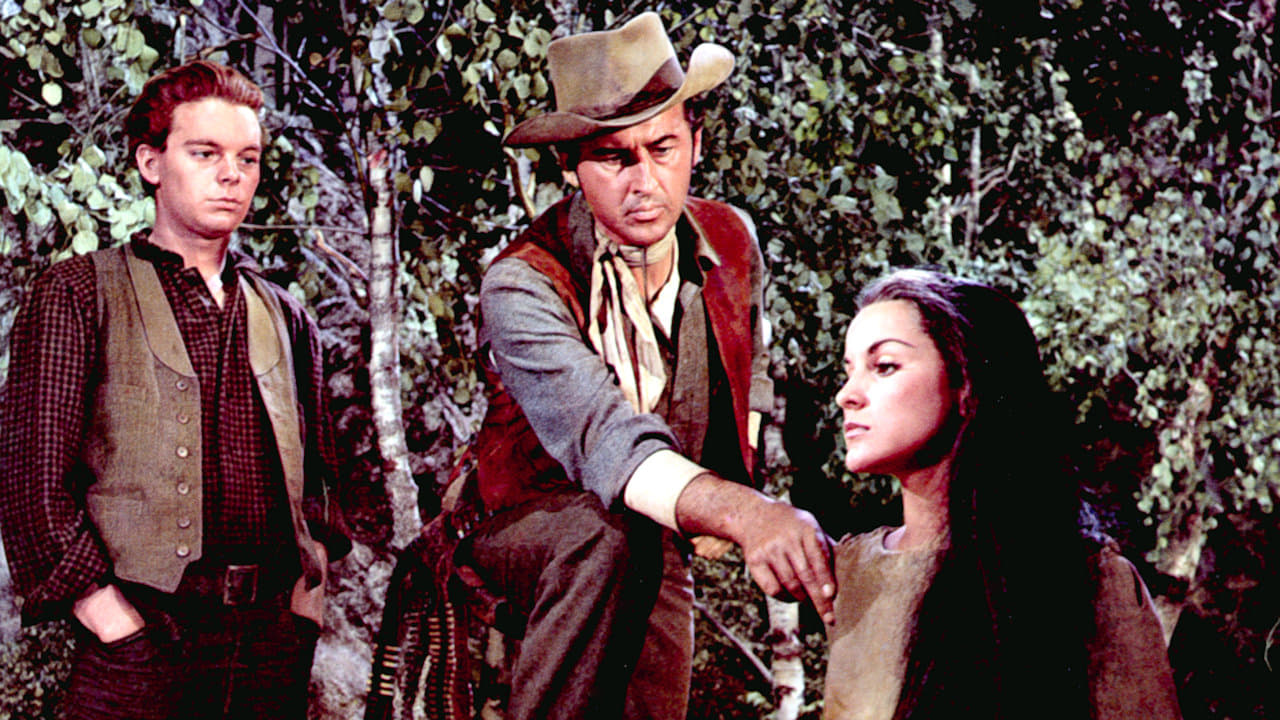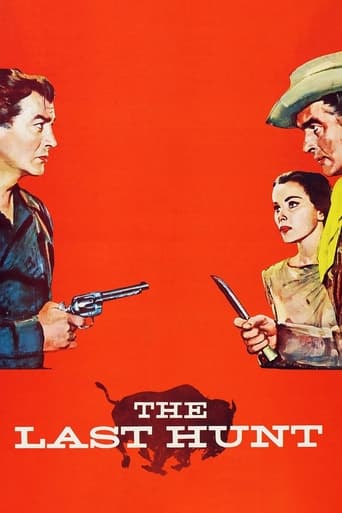

I was all of 14 years of age when my parents took me to see this film at our local cinema. "The Last Hunt" was exhibited in the proper CinemaScope ratio along with the 4-track soundtrack. Years later, shortly before I became involved in the motion picture industry as a soundtrack album producer, and, later still, a documentary film producer-director, I was able to meet several of the cast and crew who worked on "The Last Hunt." Robert Taylor said that he believed it to be his strongest performance. Richard Brooks was disappointed that the film (he related this during which time he was directing "The Happy Ending" in Denver) had been largely forgotten by the early 1970s. And last, still, during my many visits to the home of Daniele Amfitheatrof, the composer-conductor, he was quick to say that the excellent direction and script had inspired him to write a score which today is highly regarded.
... View MoreThe Last Hunt is the forgotten Hollywood classic western. The theme of genocide via buffalo slaughter is present in other films but never so savagely. Robert Taylor's against-type role as the possessed buffalo and Indian killer is his finest performance.In the 1950s, your mom dropped you and your friends off at the Saterday matinée, usually featuring a western or comedy. But it was wrong then and now to let a youngster watch psycho-dramas like The Searchers and The Last Hunt. Let the kids wait a few years before exposing them to films with repressed sexual sadism and intense racial hatred.Why did Mom fail to censor these films? Because they featured "safe" Hollywood stars like Taylor and John Wayne. But the climatic scene in The Last Hunt is as horrifying as Vincent Price's mutation in The Fly.The mythology of the white buffalo, part of the texture of this movie, was later ripped-off by other movies including The White Buffalo, starring Charles Bronson as Wild Bill Hickock. The laugh here is that Bronson used to play Indians.Today a large remnant bison herd resides in Yellowstone National Park in Wyoming. In the winter, hunger forces surplus animals out of the park into Montana, where they are sometimes harvested by Idaho's Nez Perce Indians under a US treaty right that pre-dates the Lincoln Presidency. Linclon signed the Congressional act which authorized the continental railroad and started the buffalo slaughter.
... View MoreThis movie is a real mixed bag. In some ways, it's quite intelligent and moving but in other ways the film really misses the mark and could have used a re-write.First, I admire that the film deals with the senseless slaughter of millions of buffalo in the 19th century. This was such a waste and was a topic worthy of making a film about--but the filmmakers also gave a very mixed message. While the impact on the Indians (mass starvation) and waste of life was portrayed, the prologue also said that the massacre was the result of Whites AND Indians!! This is ridiculous, as the Indians killed buffalo as needed and their impact on the buffalo population was limited--playing moral equivalence was ludicrous! I am certainly no politically correct zombie, but this assertion was stupid. Additionally, many of the buffalo that were killed in the film really were being killed! As a Department of the Interior management decision to thin the remaining herds, this thinning was filmed and the animals that died in the film really did die--something that may make PETA-types cringe or become sick--so be forewarned!! Second, I liked the counter-point of having a man who is sick of the slaughter (Stewart Granger) and the blood-lust of of his partner (Robert Taylor). However, while this juxtaposition is interesting and brought the point home well, it didn't make sense when you think about it. After all, if Granger had enough of the killing, then why did he spend so much time in the film killing?! Plus, Robert Taylor's character was so over-the-top and ludicrously unbelievable that the whole partnership seemed impossible and dumb.Now there were also several things I did like about the movie. First, I was surprised how effective Stewart Granger was as a Buffalo Bill-type man. He had no trace of his native British accent and was amazingly good. Second, the very end of the film was handled deftly--how the final showdown went down was really great. Third, it was nice to once see that a typical Western cliché is absent. In this film, there is no "hooker with a heart of gold"! Instead, she's kind of ugly and mean and is purely in it for the money! Fourth, When Granger is involved in a bar fight, the song "Yellow Rose of Texas" plays during this battle and is very, very similar to the final climax in GIANT--and I think this was intentional, as both films came out in 1956.So overall, this is a mixed bag--full of great ideas but poorly executed as well. As a result, it's interesting but quite skip-able.
... View MoreI saw this film about twenty years ago on the late show. I still vividly remember the film, especially the performance of Robert Taylor. I always thought Taylor was underrated as an actor as most critics saw him as solid, almost dull leading man type, and women simply loved to watch his films because of his looks. This film, however, proved what an interesting actor he could be. He did not get enough roles like this during his long career. This is his best performance. He is totally believable in a truly villainous role. From what I have read, he was a very hardworking and easy going guy in real life and never fought enough for these kind of roles. He basically would just do what MGM gave him. This film proves that he could have handled more diverse and difficult roles. The other thing I remember about this film is how annoying Lloyd Nolan's character was. Nolan was a great actor, but this character really aggravated me. The last scene of the film has stuck with me for all of these years. This film is definitely worth a look.
... View More